How To Wash And Care For Cornrows
Cornrow is always adored as it is a low-maintenance and great protective style for natural hair, which can protect your hair from moisture loss and breakage. More importantly, it can hide your natural hair under the wig and allows your natural hair to lay flat to avoid looking lumpy, particularly for those with thick hair. Then we will give you some professional suggestions and guidance about how to keep your cornrows fresher for longer, how to wash and take care of cornrows, and how to avoid damage and potential hair loss, as well as dos and don’ts.
How To Wash Cornrows
It's common to see women put their hair into cornrows under the human hair wigs but do nothing to take care of them for a long time. However, you need to wash your cornrows every 7-10 days to keep them clean and healthy. Here is a guide you can use to wash your cornrows without unraveling them or causing frizz in this process.
What you will need:
A Shower cap or plastic bag;
A towel or an old t-shirt Spray bottle;
Shampoo;
Conditioner;
Leave-in conditioner;
Oil;
Here’s a step-by-step guide on how to wash cornrows:
PART ONE Shampooing Your Cornrows
Step One
Before you start, mix your sulfate-free shampoo with warm water and your favorite oil into a spray bottle and then shake evenly it to get a runny consistency.
Note: 1. The sulfate-free shampoo can prevent your scalp from becoming irritated and may stop your curly hair from becoming frizzy and easily breaking.
2. Washing cornrows, it’s important to capture the natural oils of your hair to prevent frizziness.
3. You can use grapeseed, jojoba, coconut, or olive oil depending on what kind of hair you have. Coconut oil and jojoba oil is suitable for all hair types. If you have dandruff, almond oil will work well.
Step Two
Run your cornrows under warm water to open up your cuticles, and rinse the initial dirt out of your hair.
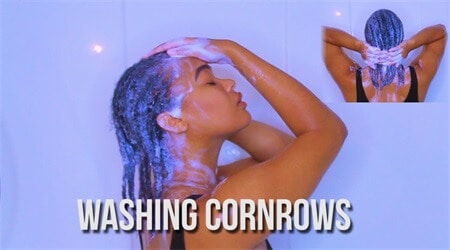
Step Three
Shake your spray bottle and spray it generously onto your cornrows and scalp. Next, use your fingers to gently massage each cornrow until all of them are lathered.
Step Four
Rinse your cornrows thoroughly until all of the shampoos are out of them. After all, Leaving shampoo in your hair could create residue build-up from the chemicals in your shampoo, thus irritating your scalp.
PART TWO Conditioning Your Cornrows
Step One
Mix your moisturizing conditioner with warm water and your favorite oil in a spray bottle and shake well. At the same time, you must make sure your conditioner mix has to have a little thick consistency so it doesn’t drip over you while you wait for it to get absorbed into your hair.
Step Two
Apply the conditioner on your scalp and cornrows evenly and make sure all cornrows are covered up. Don’t forget to gently massage it in slow vertical motions from the hairline to the nape of the head.
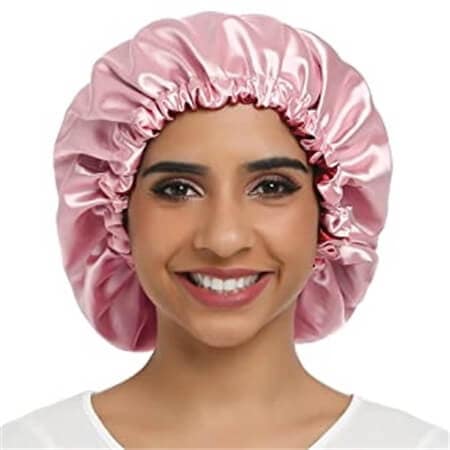
Step Three
Cover it up with a shower cap or plastic bag, which will help your hair retain moisture and stop the water that would normally evaporate from escaping. Then cover up the plastic bag or shower cap with a towel and let it sit for about 20 minutes.
Note: 1. If you don’t have a plastic bag or a shower cap you can use a grocery store bag as an alternative.
2. Do not leave the conditioner on your hair for longer than 20 minutes, otherwise, your hair will become brittle.
Step Four
Rinse off thoroughly the conditioner with warm water to remove any buildup and pat and dry your cornrows with a towel or an old t-shirt. The next step is to wear a shower cap until your cornrows are completely dry.
PART THREE Moisturizing Your Cornrow
Step One
Mix leave-in conditioner, oil, and water in a spray bottle and shake well, which will leave your hair moisturized and shiny.
Step Two
Spray your cornrows with moisturizer gently to make your hair damp with moisturizer.

Step Three
Wrap your hair with a silk or satin scarf to smooth your hair down while it dries, reduce moisture from getting out of your hair, and maintain volume.
Note: 1. It would be better to use a satin or silk scarf instead of a cotton scarf. Unlike cotton, a silk or satin scarf will not absorb the natural oils of your hair to prevent your hair from being dry and will allow for less friction between your hair and pillow as you sleep to avoid tangles or knots.
2. Of course, you can also use a satin or silk pillowcase as an alternative to a headscarf.
3. You can find satin and silk headscarves at beauty salons, certain department stores, or online boutiques.
How To Maintain Cornrows
Most people often wear cornrows underneath their wigs since they can perfectly lay flat, but when you're switching out wigs and enjoying playing with your look, it's easy to forget that the natural hair you've got growing from your head needs maintenance, too.
Don’t Keep Your Cornrows For Too Long Time
Although you might want to leave your cornrows in for as long as possible, 2-8 weeks is the expert-recommended time frame. Keep in mind that the longer you keep your braids in, the more likely your hair will be prone to breakage, knots, and tangles. Yes, they are protective styles, but they are meant to be temporary. Of curse, it mainly depends on how active you are, the overall condition and health of your hair as well as how well you take care of it while it’s braided under the wig.

For instance, the length of time you should keep your braids depends on whether you secured your wig with glue or not. If you use adhesive or glue to install a lace front wig, the cornrows should not be left under the wig for more than five weeks. When it comes to a glueless non-adhesive installation, it is ideal to remove the wig nightly, which is not only most beneficial to your natural scalp and hair but also extends the life of the HD lace wig and retains the quality of the lace wig.
Clean Your Cornrows Regularly
There is the main myth that if you have cornrows, you don’t need to wash your hair. In fact, it’s essential for you to clean your scalp and cornrows frequently to avoid any product buildup, dryness, or irritation.
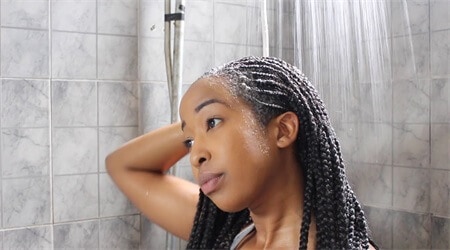
And before you even start to braid, it's crucial to make sure that your hair and scalp are clean. Regardless of the type of wig you’re using, you should be keeping your scalp clean to ensure your pores don’t clog. While for those people who take off their wigs every night, nothing is better than washing your hair once a week to make sure you are removing dirt and bacteria off of the hair and scalp.
Keep Your Cornrows And Scalp Moisturized
The most important thing to consider when wearing a protective hairstyle is to maintain the health of your scalp and add moisture to your hair. That is because your scalp is more exposed than usual when you try cornrows. As a result, it can be more prone to dryness, irritation, or flakiness. To solve this problem, you need to give your scalp and hair the moisture it needs regularly.
However, some hair products that will grease the hair often result in the build-up, which in turn would require more washing, thus shortening the lifespan of your cornrows. Therefore, instead of applying thick and heavy products that can cause excess build-up, our experts recommend hydrating the hair with intention.
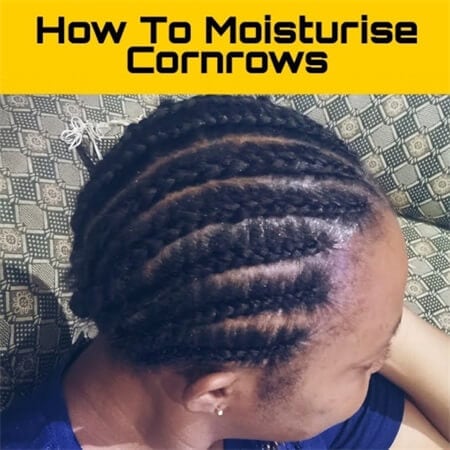
For example, when it comes to keeping the scalp balanced and hydrated, you can moisturize your cornrows with a mixture of water and light oils, such as olive oil, coconut oil, or jojoba oil. After all, if the oil is diluted with water, it reduces the chance of build-up while still providing the scalp with the moisture it needs.
To avoid messing up the cornrows when applying the oil, please apply it to where the scalp is exposed and also press it into the cornrows themselves instead of rubbing the product in, which not only ensures that they’re nourished but also helps to prevent the braids from becoming loose.
Avoid Wearing Too Tight Cornrows
As we all know, if the cornrows under the wig cap are too tight, it may cause tension and breakage of the hair strands, while on the scalp you can develop itchy spots. With recurrent traction, you can then develop traction alopecia, where there is hair loss, which can be permanent due to the tension on the scalp over time. Not to mention that when your wig is too small or big, so there will be excess rubbing along the hairline, thus causing traction alopecia.
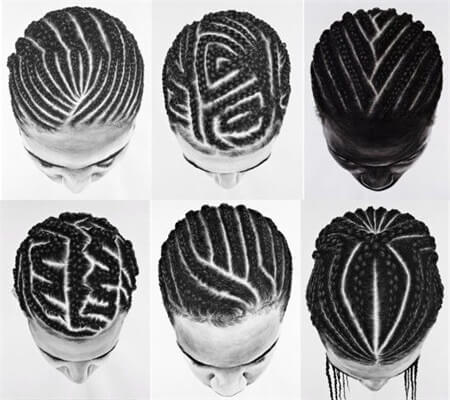
Luckily, it can be avoided in several ways. Firstly, ensure that you don’t braid cornrows too tight and the wig fits properly. It means you should not experience pain or itching after having the hair cornrowed. In addition, we also advise you to give your hair a break between cornrows and aim for at least a month of the hair being left in its natural state before cornrowing or braiding again. Except for the above, you need to avoid repetitive stress on the same areas by definitely switching up these cornrows’ patterns.
Reduce Unnecessary Friction
As the weeks go by, your cornrows will loosen. According to experts, there are several ways to help maintain the life of your cornrows.
There is no doubt that The best way to maintain cornrows is to avoid any unnecessary friction on your hair. For example, you can put on a wig cap to reduce the friction between cornrows and wigs.
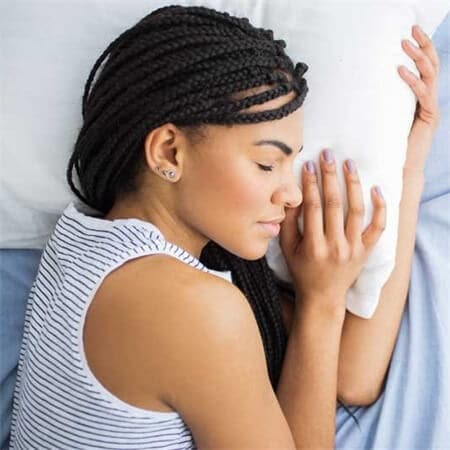
Actually, friction primarily happens when you’re sleeping on cornrows without protection. In short, when your hair isn’t protected well, you lose moisture and shine and are more prone to frizz.
To avoid causing friction and dryness while you sleep, we suggest you to wrapping your hair up in a silk headscarf or a satin bonnet. And a silk pillowcase also works well.
What do you think of these tips about how to clean and rake care for cornrows? If you have a better one, please comment below.
